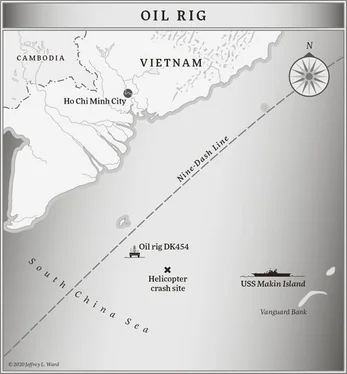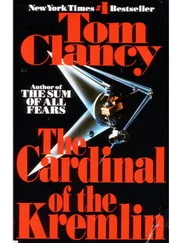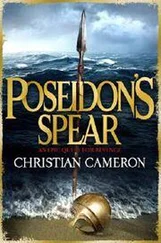The captain’s only criteria were that the candidates be brave, calm under pressure, and physically fit enough for the mission.
Wan pushed the pencil so hard with his thumb that it snapped in half. How could he pick the next men to die? Most of them were mere boys. Fifteen were already dead, burned to death or killed by smoke inhalation when PLAN nuclear ballistic missile submarine Long March #880 suffered an engine room fire. A dozen more were sick or injured. All of them were terrified. One seaman’s apprentice who had witnessed the fire had gone out of his mind, screaming “Sixty-one, sixty one,” over and over as he ran back and forth in the narrow passageways. In 2003, all seventy crewmen aboard the Great Wall #61 , an older, Ming -class sub, had suffocated at their stations when the diesel generator failed to turn off and used up all the oxygen on board. Any submariner in the fleet who denied having dreams about the disaster was lying.
This should not have happened to Wan Xiuying. He was an up-and-coming star of PLA-Navy’s relatively nascent blue-water submarine force. He’d wanted to be a submariner since he was a small boy, reading every book and watching every movie about submarines that he could get his hands on. Most of the movies were in English, which had afforded him a perfect opportunity to study American idioms. Though they were meant to make the Americans look heroic, they almost always showed the captain and the first officer at odds over command of the vessel. Commander Wan hoped that was the truth. It would make beating the Americans easier in a pitched sea battle if the two men who were supposed to be in charge of the ship were constantly at each other’s throats like they were in Crimson Tide —or in the book Run Silent, Run Deep … In U-571 the captain did not trust the XO to make difficult decisions—decisions like Commander Wan now found himself facing. The list of conflicts was almost endless.
Wan revered and respected Captain Tian. He felt certain the feeling was mutual. Were it not so, Captain Tian would have, no doubt, personally stuffed his XO in a torpedo tube and gotten him off the boat.
Tian was a senior captain, would have certainly been promoted to admiral after this tour. He had quite literally grown up with the Chinese Navy and understood the pressing need not only to build excellent submarines, but to build excellent submariners. He worked very hard to pass on his knowledge to those next in line. From the time Wan had come aboard, it was clear to him that Captain Tian demanded strict discipline, a hard-as-ironwood boss who was focused not only on the command of his submarine, but on making certain his new XO was equal to the task when he got his own boat.
But none of that would happen now.
The experimental Mirage silent propulsion system was a twisted heap of charred metal. Fifteen men had died horrible deaths, including the ship’s medic. Twelve more were too severely burned to work. Worst of all, the chief engineer and three of the five engineering mates were dead. The remaining two, still in their teens, were from poor counties that still used oxen in the field. They’d only recently graduated from submariner school in Qingdao, but their training specific to the engine operation and maintenance was to have taken place aboard the boat. Even then, with a new, experimental propulsion unit, they could do little more than stare at the mess while holding a wrench, clucking to themselves like a husband who did not want to admit to his wife he had no idea how to fix a stalled car.
When it had become apparent that the fire involved the submarine’s propulsion unit, Captain Tian had considered an emergency blow—that is, sending compressed air into the ballast tanks and blasting them to the surface. Both the United States and Russia provided periodic analysis of ice and possible open water. The United States called theirs a FLAP analysis—Fractures, Leads, and Polynyas (the Russian word for open water surrounded by ice). But the ice here was moving, a flowing solid, with jagged keels that hung down like ax blades, capable of chopping the 880 in half during an uncontrolled ascent.
Fortunately, the nuclear reactor was in the compartment forward of the Mirage drive. The reactor itself and all but two of the pumps were still operational.
If the charts and calculations were correct, the 880 lay belly-down on a rocky ledge, one hundred and seventy meters below the surface, with an undersea mountain rising to starboard. Collision with the rock face on the way down had ripped a four-meter gash in the outermost hull of the double-hulled vessel. The inner hull was still intact, keeping the crew alive—for the moment—but with the ballast tank damaged, an emergency blow was now problematic.
To port, off the edge of the ledge, the seabed lay some eleven hundred meters below—well beyond crush depth, even for a powerful double-hulled submarine like 880. If the baby-faced engineering mates were able to somehow get the boat moving in any direction other than up, she might simply shuffle off the ledge and plummet straight to the bottom.
Of course, that would solve Commander Wan’s problem.
At first it seemed like they had one ace in the hole. Professor Liu Wangshu should have been able to fix the drive. It was his design. That’s why he was on the boat, to make sure it worked. And work it did. When the pumps—one of the loudest parts of a nuclear submarine—were rigged for ultra-quiet, the gearless Mirage drive proved to render the 880 all but invisible. The fire appeared to have started in one of the pumps, some sort of lubricant ignited by a spark, one of the youngsters surmised. Wan wondered if they would ever know. Over and over, history had shown that it was often a string of simple, relatively minor mistakes and seemingly insignificant design flaws that led to catastrophe.
Liu Wangshu could have seen the problem at once, had he not been sick. Sick was not nearly a strong enough word to describe what was wrong with him. Only a handful of the crew knew Professor Liu’s background. He dressed in regular engineering officer’s coveralls, and he spoke with the authority of a professor, which was not uncommon among officers in any branch. He had the shoulder boards, so the crew obeyed him, even though he was new and unknown to them. Oddly, the fire itself had not hurt him. His lungs appeared undamaged by the toxic smoke. No, this was something else. The XO guessed it was a stroke, judging from the man’s sagging face and the gibberish he spoke. Probably brought on by the sudden stress of seeing his life’s work destroyed by fire.
They’d given him aspirin and confined him to bed with two junior submariners watching him. Either he would get better or he would not. If he did not get better, then everyone on the sub would eventually die. Some sooner, when they went insane and began to kill one another. One of the sonar techs had already gotten into a fight with the cook. Some later, when their food ran out.
As long as the reactor continued to function—decades, if no pumps broke—they had power for heaters, the amine CO 2scrubbers for clean air to breathe, the water maker, and the pumps to take waste off the submarine. Commander Wan anticipated they had almost three months of food—now that there were fewer mouths left alive to eat it. Marooned in their bubble island, they would simply starve to death.
There was an alternative—that only Commander Wan and the captain knew about.
Rigged against bulkheads in the 880 ’s nose and tail were two explosive disks, each over two meters in diameter. The experimental Mirage drive was the only one of its kind. Ordinarily, Professor Liu, the only person who could re-create the mechanism, would never have been allowed on the submarine. But he’d somehow pulled strings. He wanted to see his creation work in the real world.
Читать дальше











![Александр Ирвин - Tom Clancy’s The Division 2. Фальшивый рассвет [litres]](/books/417744/aleksandr-irvin-tom-clancy-s-the-division-2-falsh-thumb.webp)
